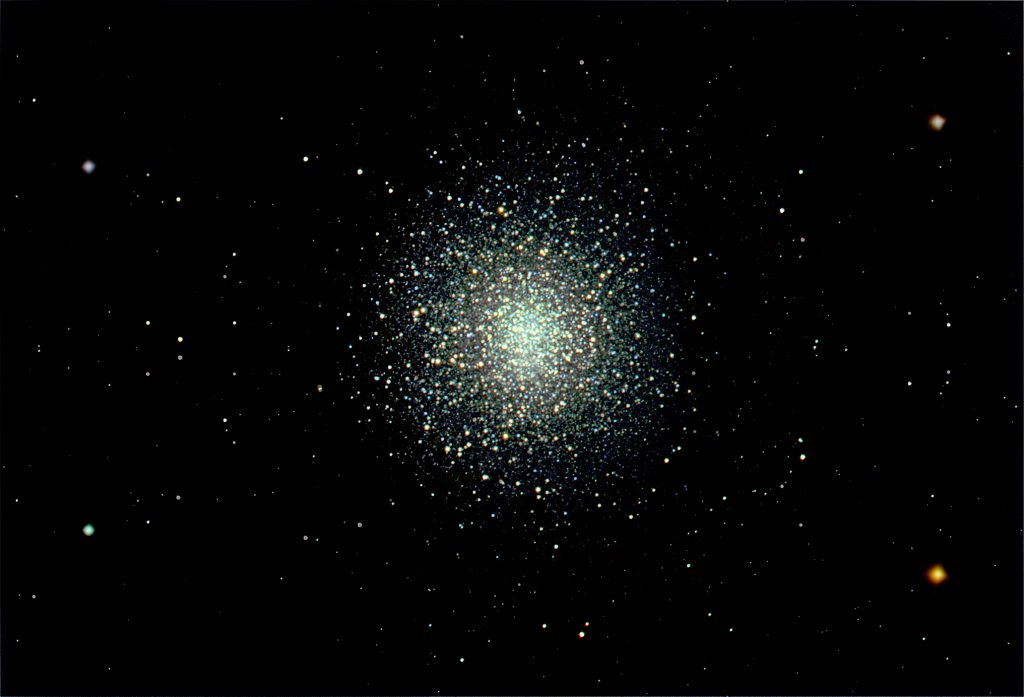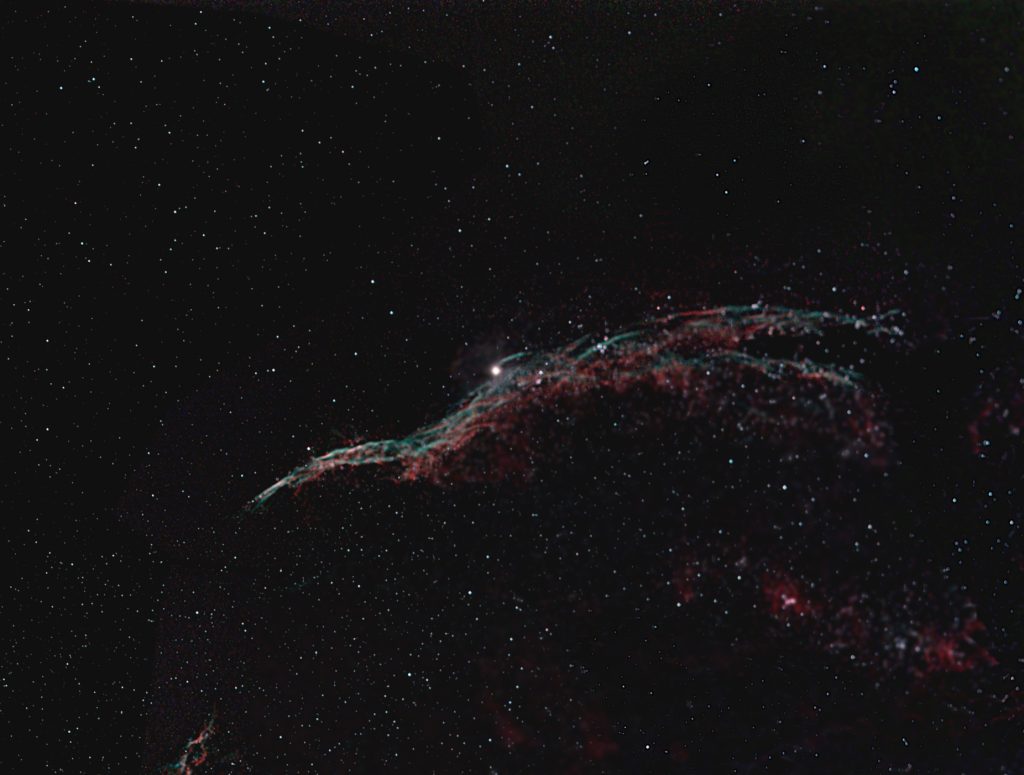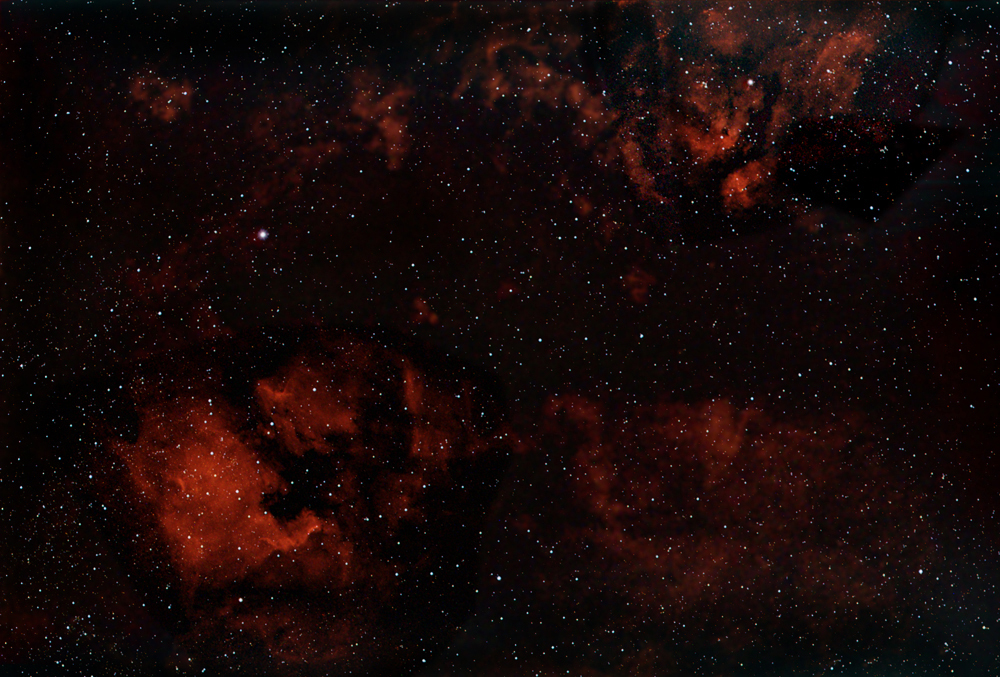SEPTEMBER 2021
Advice to newcomers to astroimaging regarding astro camera type and autoguiding
An article in the author’s Astronomy Digest – https://www.ianmorison.com
There is a much that can be done using a standard (or modified) DSLR or Mirrorless camera as many articles in this digest will testify. At some point some may wish to purchase a dedicated astro camera such as an Altair Astro (AA) 294c Pro cooled camera having a Micro 4/3 seized sensor which appears to be identical to the ZWO ASI294MC. The ‘c’ defines it as a RGB colour camera using a Bayer matrix to enable it to produce colour images. They do have two advantages over a standard DSLR in that the red cut-off filter that reduces the sensitivity to H-alpha emission is not present and, if a Peltier cooled version were used it will have a far lower dark current reducing the noise in the image.
One then has a choice of a colour or mono camera (with itsassociated filters).
For many years I have happily used an SBIG STF-8300 CCDcamera with filter wheel to do both LRGB and narrowband imaging on anautoguided mount. But, having used the AA 294 for some months now seriously wonderwhether autoguiding or the use of a mono camera is really necessary for thoseof us who live under any but the most pristine skies or have very long focallength telescopes. There is no doubtthat a mono camera system can produce better images but at greater expense andimage processing time, but it is surprising how well the latest CMOS colourcameras can perform.
Autoguiding – is itnow necessary when using CMOS cameras?
With the use of CCD astro cameras, autoguiding was usuallyrequired as, due to the relatively high read noise, longer sub frames wereneeded and, using a USB2 interface, image upload times of ~7-10 seconds meant that very short exposures would be inefficient in their use ofimaging time. With the latest CMOScameras, their very low read noise means that the use of many short exposureswill not harm the final image and, under light polluted skies will actually bebetter. SharpCap Pro has a ‘brain’ whichtakes an image of the sky and, based on the sky brightness, suggests theoptimum exposure. Pointing my telescopeover the City of Manchester, some 20 miles to the north, an exposure of 10seconds was suggested! So exposures of30 to 60 seconds may well be optimum under light polluted skies. With their USB3interface, download times are not a problem. Most mounts that are well alignedshould be able to track sufficiently well so that star trailing will not beapparent when such short exposures are made. The image of M13 was taken unguided taking 30 second exposures using aVixen VC200L, 1,800 focal length, telescope – I think the stars look prettygood however the outer parts of the cluster have been masked by the lightpollution at my urban location. I hopethis image makes a good case for not requiring the use of autoguiding whenusing telescopes of focal lengths under 2,000 mm.

[Incidentally, I do not perfectly align the mount on the NCP(using a QHY PoleMaster) as I want the image to very slowly move across thesensor during the imaging period. Thisremoves what Tony Hallas calls ‘colour mottling’ due to uneven pixelsensitivity. When autoguiding,‘dithering’ is often employed to give the same result.]
Imaging with a colourCMOS cameras and, when desired, a Tri-Band filter rather than a monochromecamera, LRGB and narrowband filters.
A CMOS colour camera will obviously provide a colour imagedirectly with less post processing required. Using a mono camera with LRGB filters will provide a better image giventhe same total exposure time but, unlessimaging from very dark skies, light pollution will limit the quality of thefinal image so giving, I suspect, similar final results.
What I have found very interesting is the use of a colourcamera and tri-band filter. When producing an image of an emission nebulaone really needs an RGB image to produce a star field in which the stars haveappropriate colours. The total exposurefor this does not need to be long – in such images the stars do not want tooverwhelm the nebula. One can then takean image using, say, a tri-band filter:typically they will have one pass band to capture the H-alpha spectral line anda second, broader band to capture two spectral line of O III and that of theH-beta spectral line.
The stars in this image will not look good so one can usethe wonderful program StarNett++ to remove them. The stars image can then be added using a‘screen’ blending mode when, usefully, their brightness can be controlled usingthe ‘opacity’ slider. The image of theWitch’s Broom nebula was taken using this technique. The quality was limited by the lightpollution at my urban location.

Together, the OIII and H-beta spectral lines should give ablue-green, (teal) colour as seen in my image. I wondered why many of the images on the Web showthis as blue but the consensus is that teal is the correct colour – which comesnaturally when using a colour camera.
The third image was a surprise to me – and it is this that has really made me think that Mono cameras are perhaps no longer required for all but the most dedicated imagers. Using a 90mm lens at f/3.5 and my AA 294c camera on the AA Nikon adapter mount, I first imaged in full colour (25 minutes total exposure using 60 second sub exposures) the region around Deneb and Sadyr that emits much H-alpha emission including the North America, Pelican and Butterfly Nebulae. I then mounted a 2 inch H-alpha filter within the mount and hoped to spend at least an hour narrow band imaging, but clouds limited the total exposure to just 38 minutes (again using 60 second exposures). [One could just as easily use a triband filter and, if it is necessary to remove light pollution, simply process only the red channel of the image to remove light that is passed by the OIII/H-beta band.] The RGB and H-alpha images were processed as above using Starnett++ to give the result shown.

To be honest, I was amazed at how well the Nebulae showed up– particularly the fainter Pelican nebula. Could use of a Monochrome camera using LRGB and H-alpha filters havedone any better given the ~1 hour total exposure time? Theoretically yes, but I suspect that thedifference will not be that great.
So my advice is this; until you get very experienced it is definitely better to simply buy a CMOS colour camera and, for emission nebula, a tri-band filter – and save a lot of money in doing so.